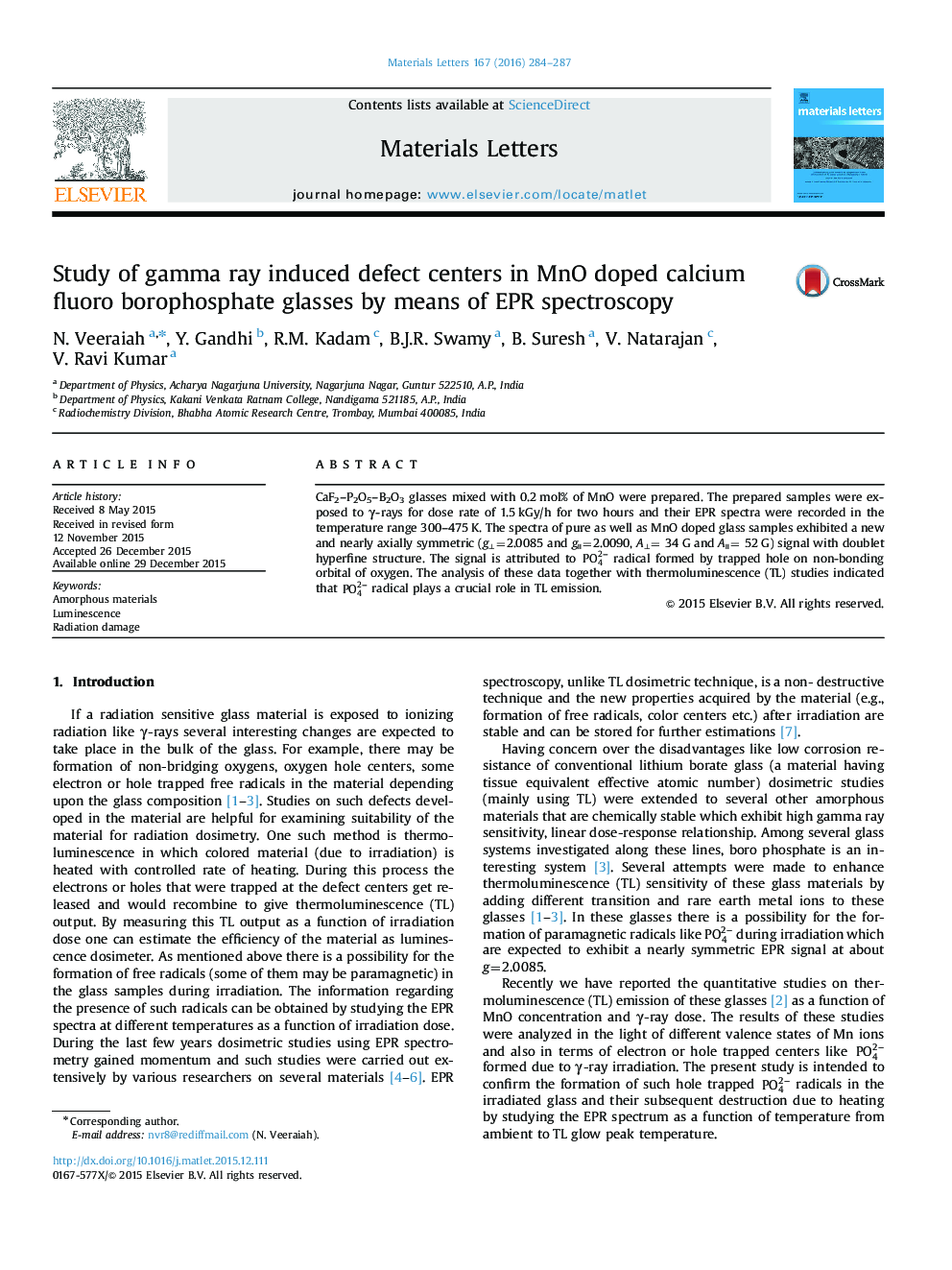| Article ID | Journal | Published Year | Pages | File Type |
|---|---|---|---|---|
| 1642132 | Materials Letters | 2016 | 4 Pages |
•CaF2–P2O5–B2O3 glasses mixed with 0.2 mol% of MnO were prepared.•Samples were exposed to γ-rays for dose rate of 1.5 kGy/h for two hours.•ESR spectra were recorded in the temperature range 300–475 K.•The spectra exhibited near axially symmetric signal with doublet hyperfine structure.•The signal is attributed to PO42- radical formed by trapped hole O− orbital.
CaF2–P2O5–B2O3 glasses mixed with 0.2 mol% of MnO were prepared. The prepared samples were exposed to γ-rays for dose rate of 1.5 kGy/h for two hours and their EPR spectra were recorded in the temperature range 300–475 K. The spectra of pure as well as MnO doped glass samples exhibited a new and nearly axially symmetric (g⊥=2.0085 and g||=2.0090, A⊥= 34 G and A||= 52 G) signal with doublet hyperfine structure. The signal is attributed to PO42- radical formed by trapped hole on non-bonding orbital of oxygen. The analysis of these data together with thermoluminescence (TL) studies indicated that PO42- radical plays a crucial role in TL emission.
Graphical abstractEPR spectra recorded at 475 K with super imposition of TL emission for calcium fluoro boro phosphate glass.Figure optionsDownload full-size imageDownload as PowerPoint slide
